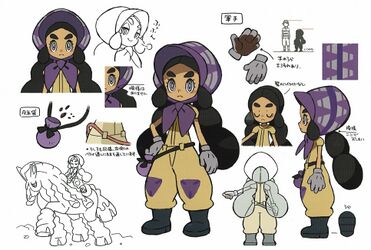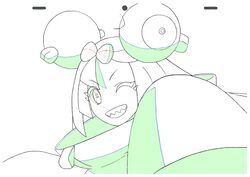User:Lewtwo/Genga
List of Production Terminology in Pokémon.
This is a page that describes various terminology surrounding the production of the Pokémon series.
BANK
Beta
Genga
Genga (Japanese: 原画 literally "original pictures") is a term used to describe the Key Animation drawings used in 2D animation. They are the moments that define the motion within a cut of animation drawn by the Key Animator, and are often corrected by those higher up on the production team, such as Animation Directors, (also known as Animation Supervisors) Chief Animation Directors, or Character Designers. They are then traced by in-between (Japanese: 原画 "douga") artists, who also draw the missing frames following the notes left by the Key Animator for timing and frame-pacing.
Occasionally, this production material is released officially, and in some instances, by staff on the series after their work has been completed.
Layouts
Settei
Settei, (Japanese: 設定 literally "setting materials") is a term used to describe detailed reference material of designs and visuals from a variety of angles, given to artists from supervisors in their field.
Often, the settei officially released by The Pokémon Company in various art books are slightly different than the original settei, as can be seen below with Hapu from Pokémon Sun and Moon.

|

|
| SM Artbook | USUM Artbook |
In settei for animated productions, where flat colors are used, the color of each line or material represent a different
- Black Outlines
- Red Lines
- Blue Lines
- Green Lines
BLACK LINE Outlines and lines that don't disappear.
BLUE LINE Shadow line that indicates division between light and dark. Does not appear in final paint.
RED LINE A line that disappears but is used for special color fills, especially for whites of eyes and highlights.
GREEN LINE Hidden features, like hair under a hat or a torso under a cloak, used to make better drawings without being shown in the final animation.
